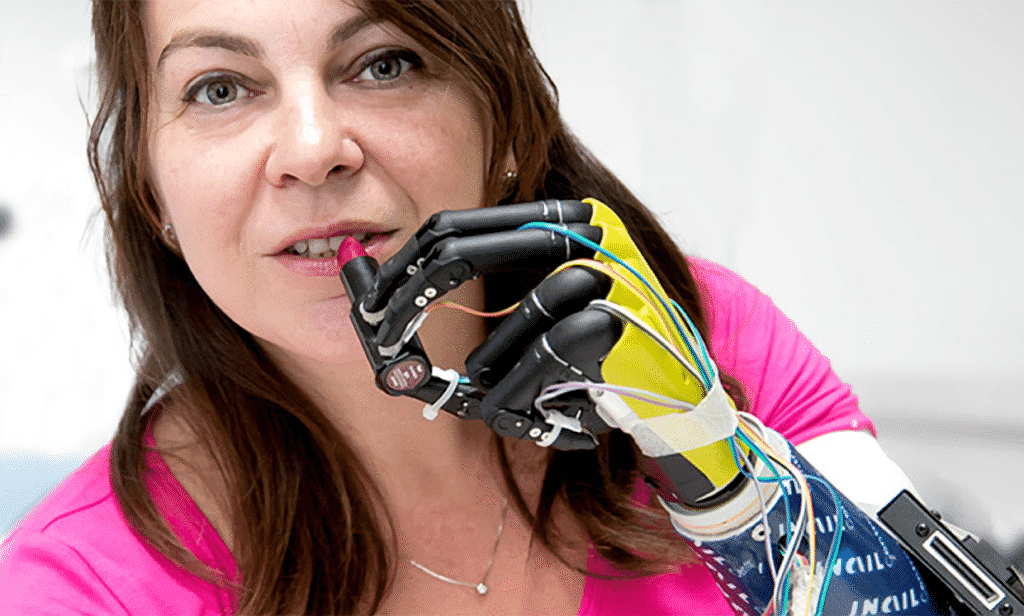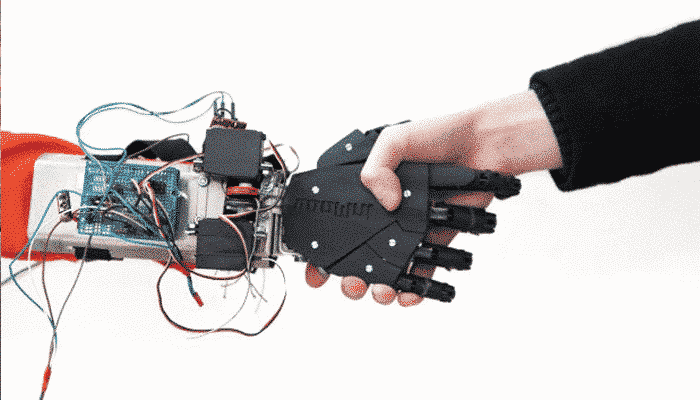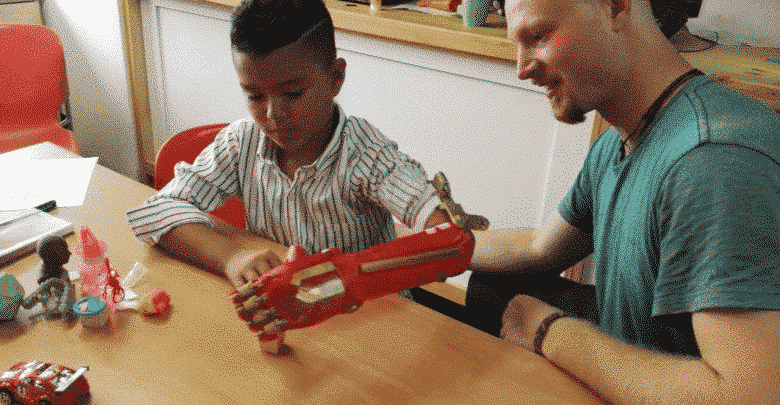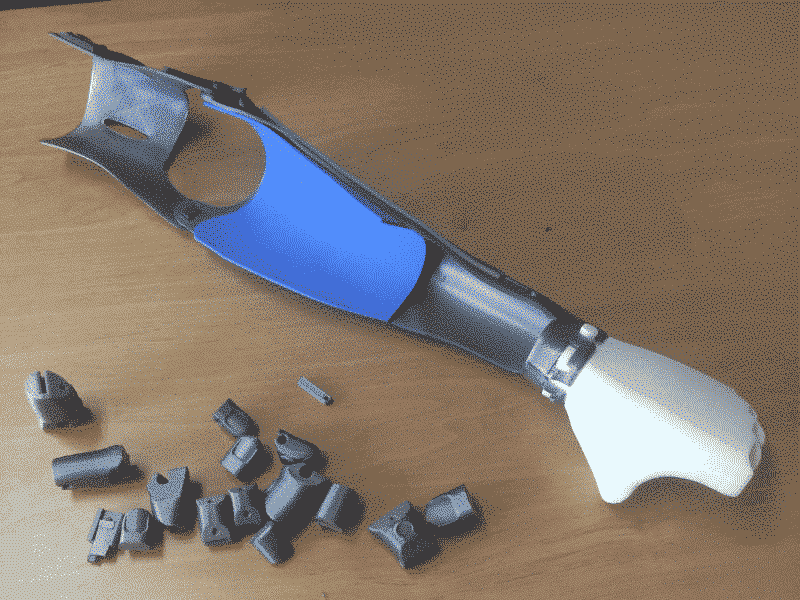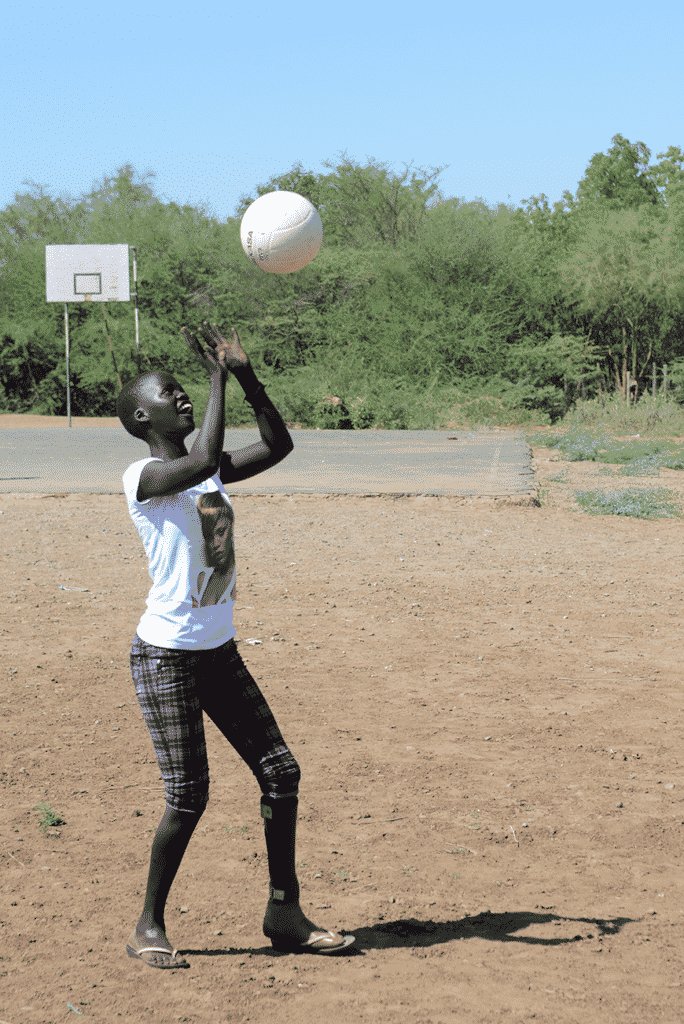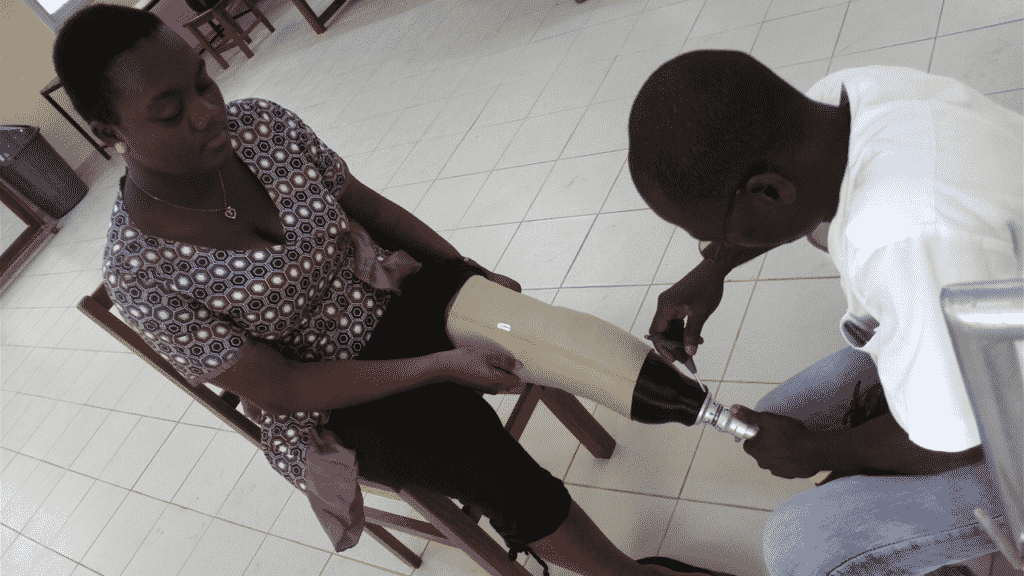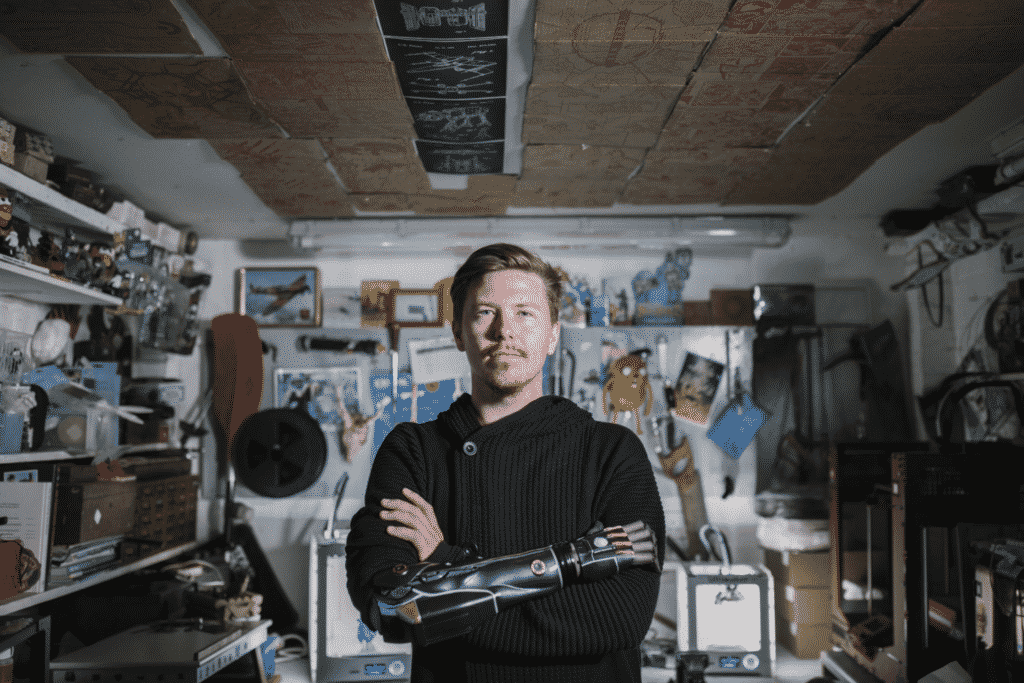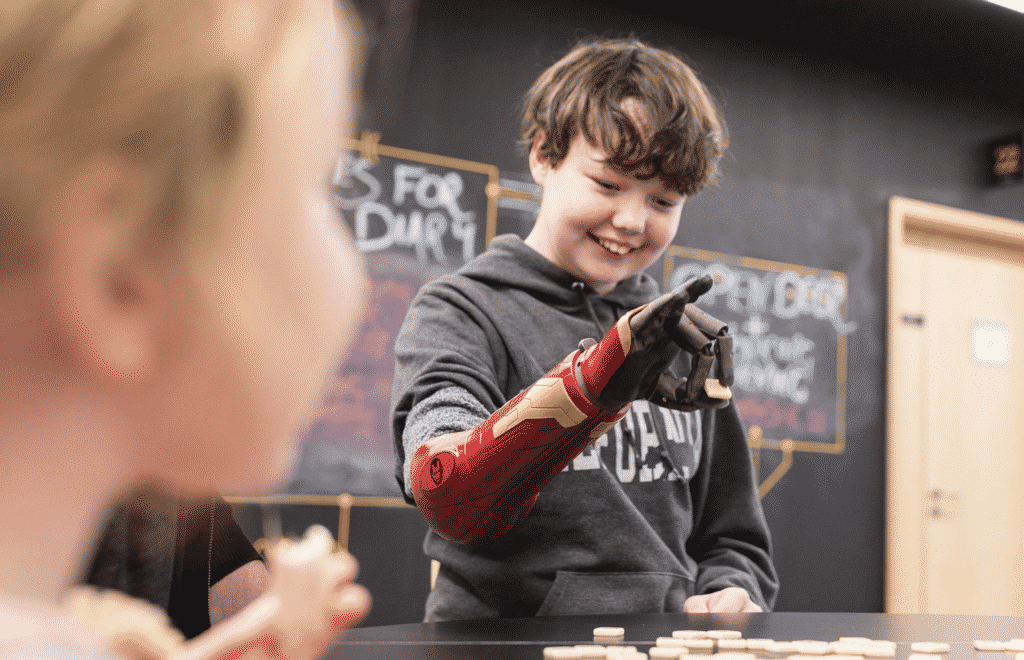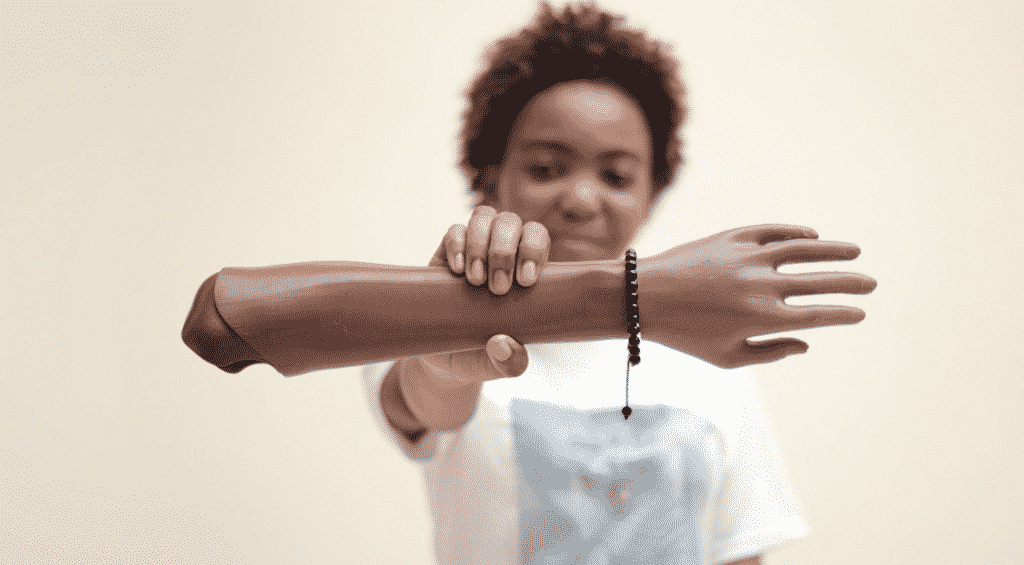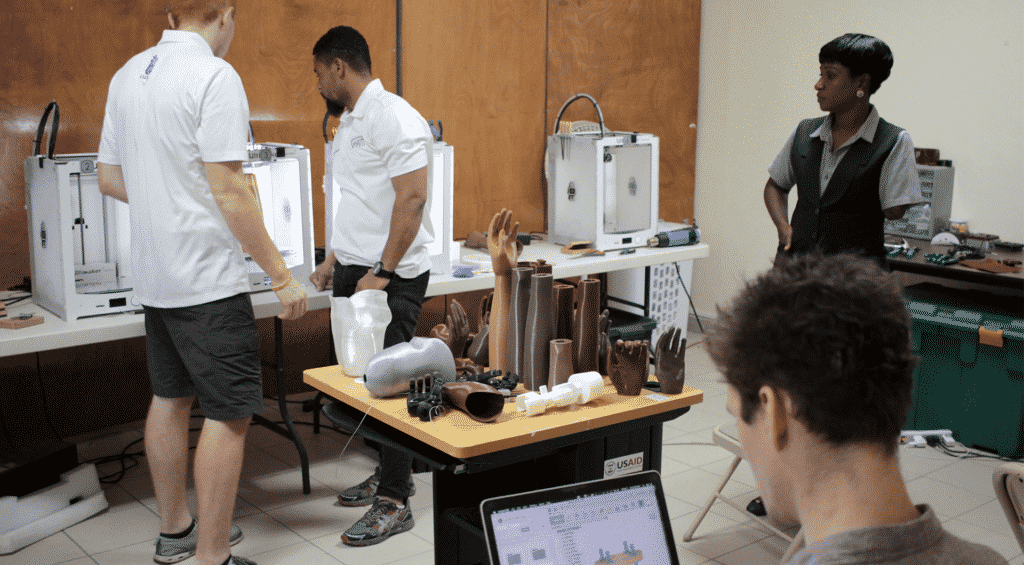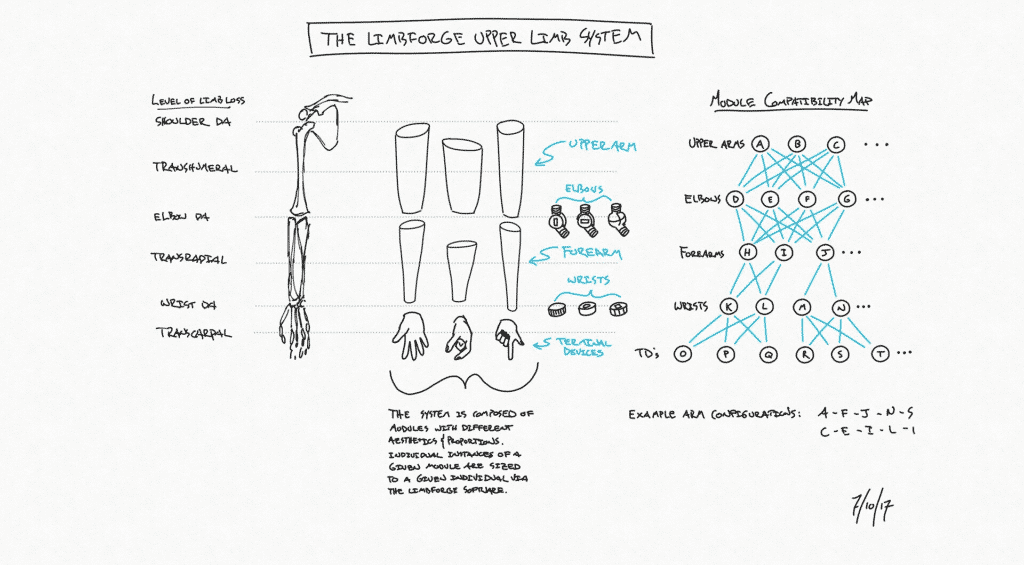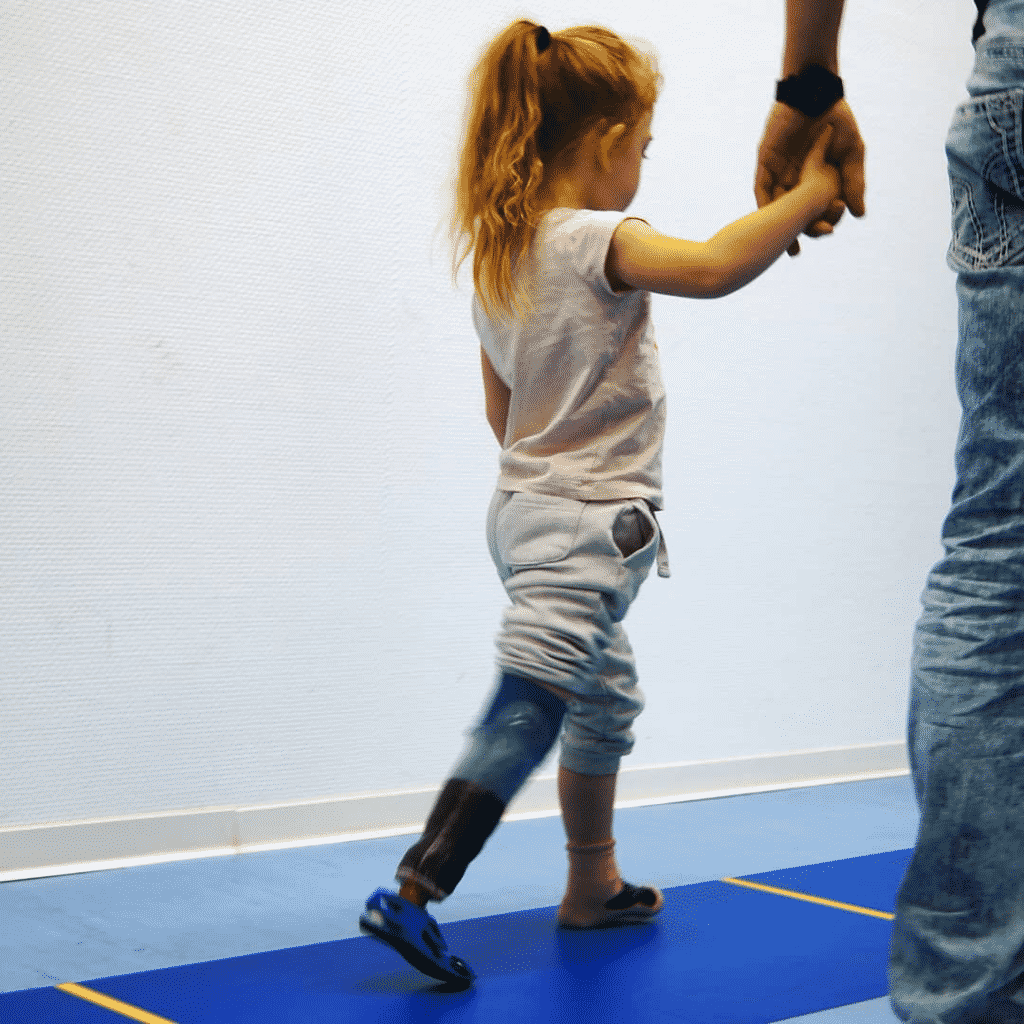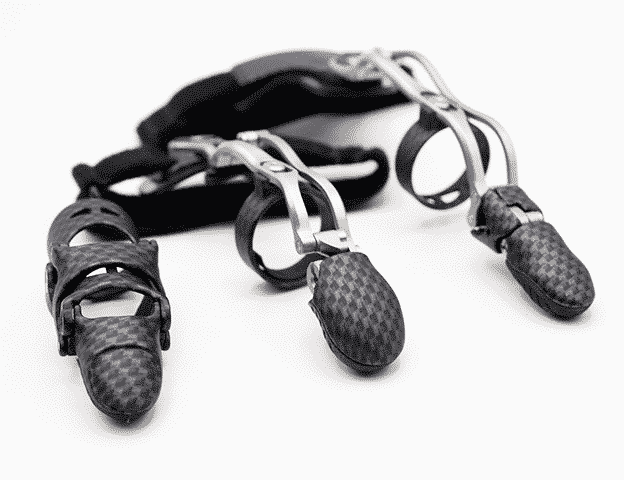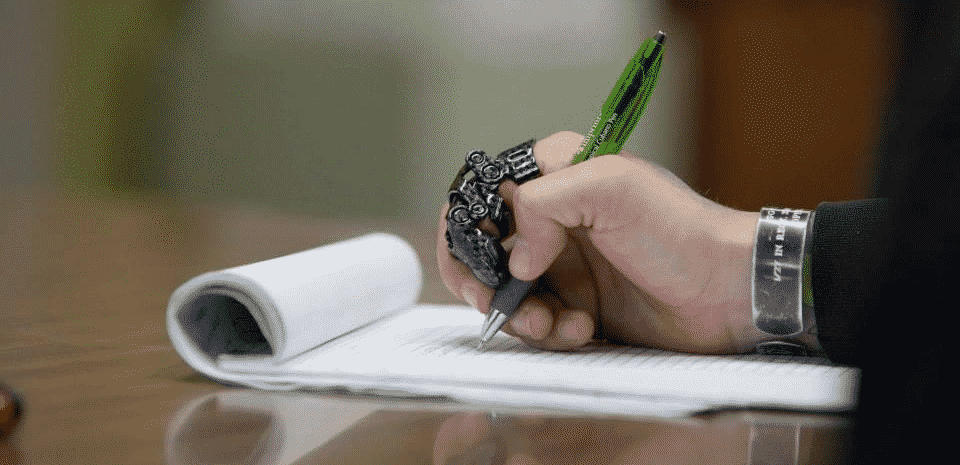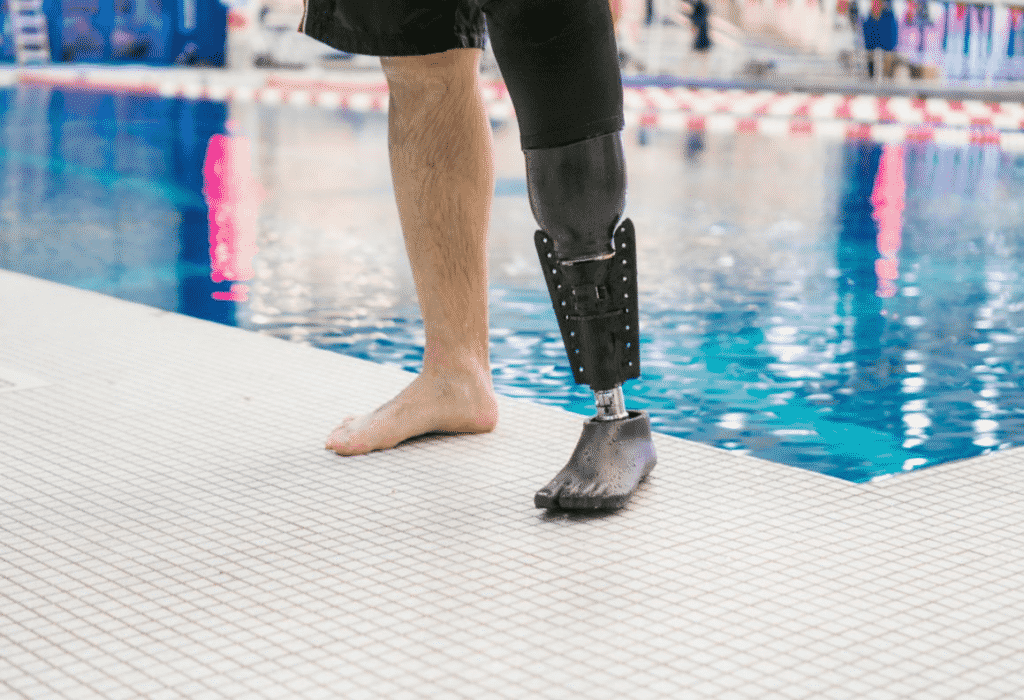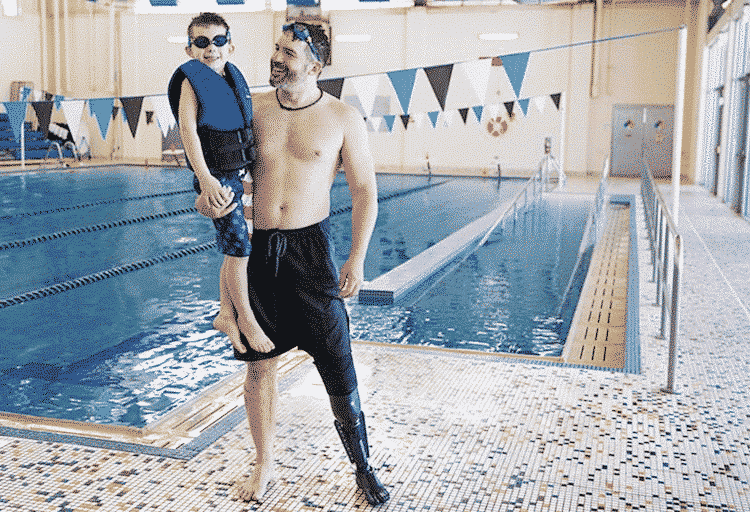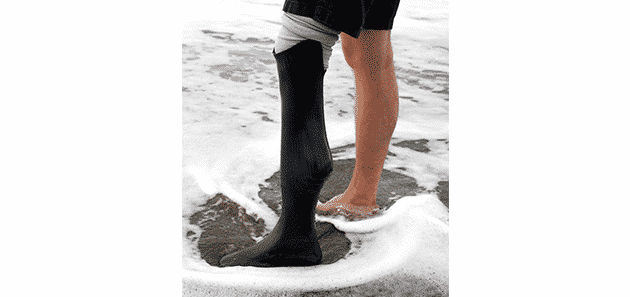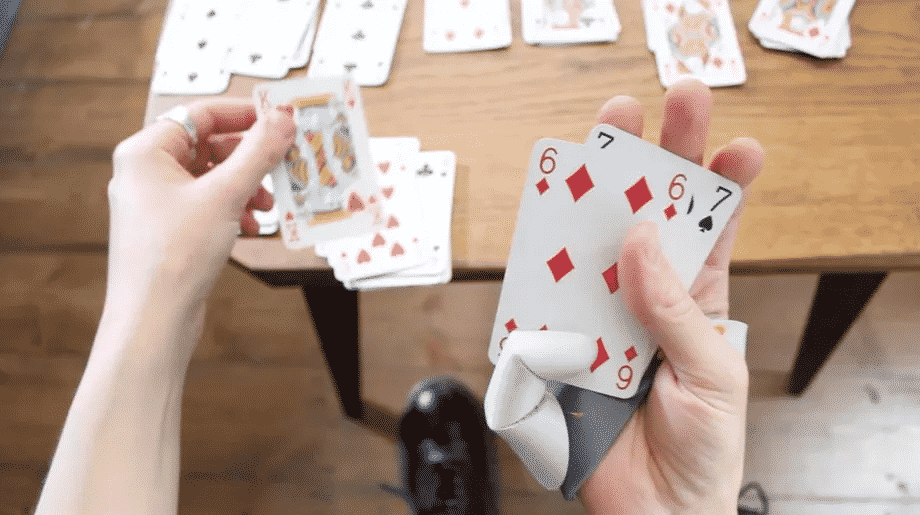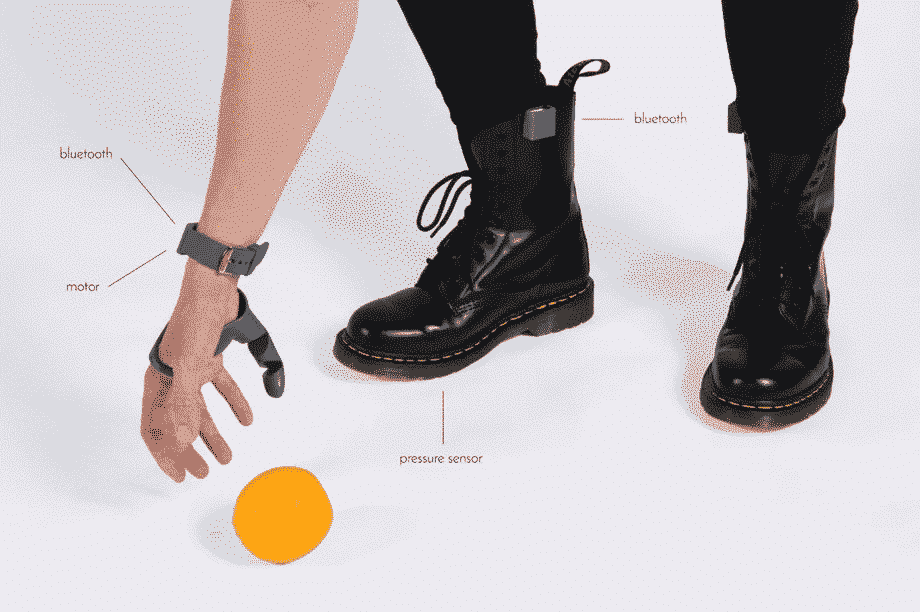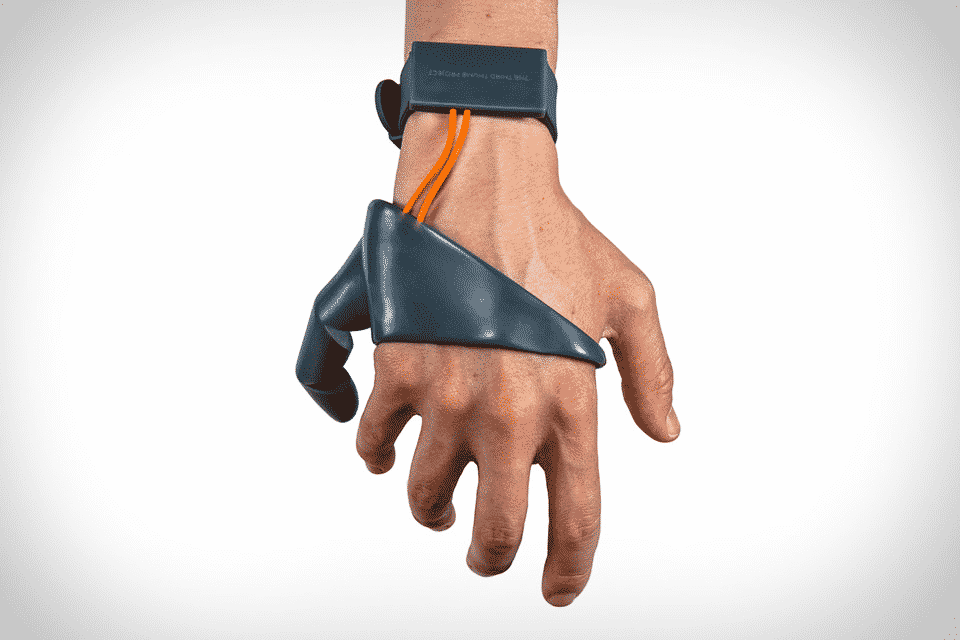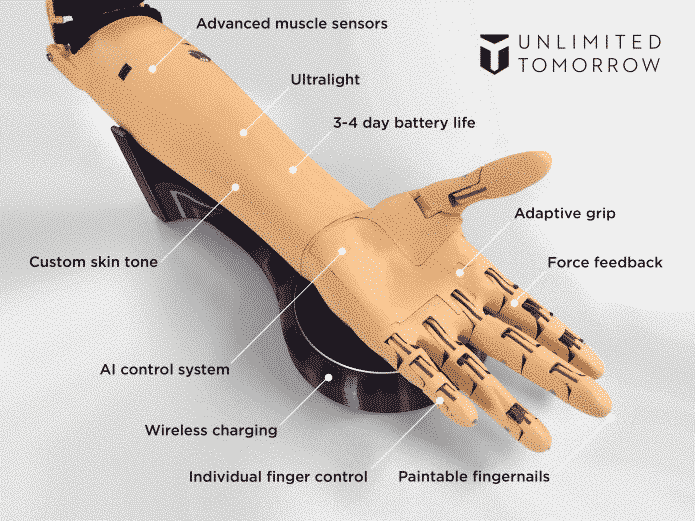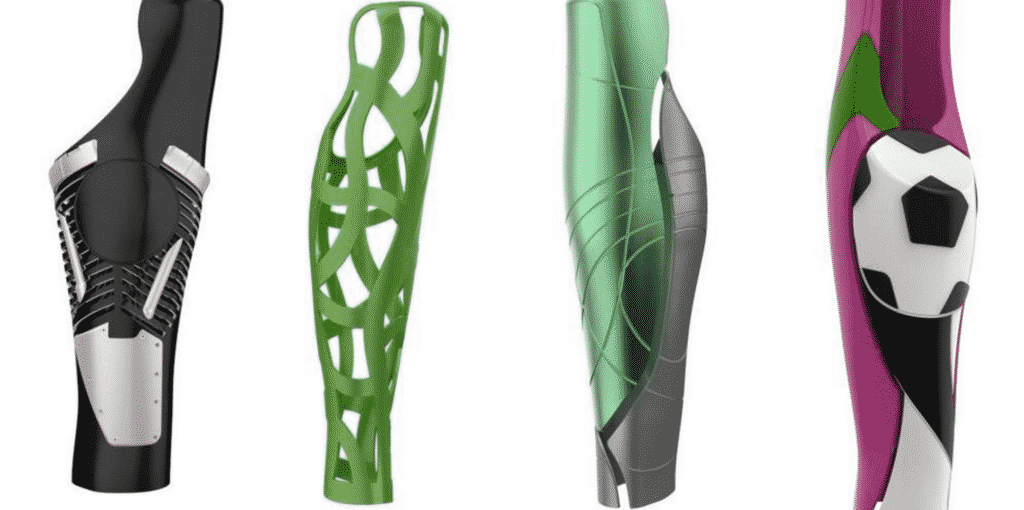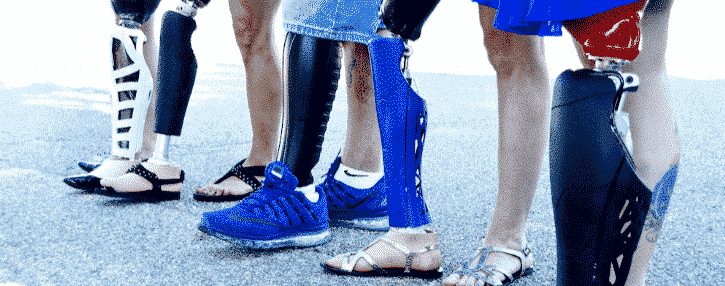In France, every year: 300 people lost their hands, 150 have protheses, 75 prefer an aesthetic prosthesis, 75 a myoelectric prosthesis (electric hand controlled by muscle sensors). In the United States, prosthetics can cost a family anywhere from $5000 -$50,000, resulting in a significant financial burden. The 3D Printed Medical Prosthetics market is projected to grow at a CAGR of +13% during the forecast period (2020-2028).
Moreover, prosthetics need to be custom fit to the individual, requiring a production time on the order of weeks or months. Thanks to their relatively high accessibility and affordability, 3D printed prosthetics are slowly changing the face of the medical industry, and benefiting people from both developed and developing countries.
When talked about the most common prosthesis, it usually covers prosthetic hand, arm, leg, or foot. Here is a list of companies and associations which use 3D printing and change the daily lives of people with physical disabilities. They not just only focus on the functionality, but also try to drive the prosthesis into accessories. Let’s see how they make it.
Bionico Hand
The French Nicolas Huchet started the project Bionico Hand in 2012 and managed to create a prosthetic hand myoeléctrique from different open source technologies including 3D printing. The hand was printed in 3D from ABS and includes muscle sensors and a Bluetooth bracelet that would transmit the feeling of touch to the user. It would be able to do 4 basic movements and would easily customize, all at a cost of less than €300.
e-NABLE
e-NABLE, also known as Enabling the future, is an association created in the United States by Jen Owen. The idea behind this project is to bring together makers and enthusiasts to create a network of models of prostheses in the world that can obviously be printed in 3D. The main objective is to “give a hand” to the people who need it most, thus avoiding the high cost of a traditional prosthesis. Since its creation in 2013, the association has donated 3D printed prostheses to hundreds of people around the world.
Smart International, under license from Eastman Kodak Company, has announced it will be supporting e-NABLE Medellin’s effort in Colombia by providing 3D printing hardware, materials and technical support. Through the collaboration with Smart International, e-NABLE Medellin will also establish a Technology and Youth leadership program for Colombia’s youth.
Humanity & Inclusion
HI is an independent and impartial aid organization working in situations of poverty and exclusion, conflict and disaster since its beginnings in the Cambodian refugee camps in 1982. They work alongside people with disabilities and vulnerable populations, taking action and bearing witness in order to respond to their essential needs, improve their living conditions, and promote respect for their dignity and fundamental rights.
They have been helping disabled people in Kenya, Nepal, Syria, Pakistan, Bangladesh, and India, etc. With prosthesis, these people can move around and do things by themselves again, thus they can make a living and grasp the hope of life.
Hero Arm
Open Bionics would be the first company in the world to launch a 3D printed bionic arm that would not only be clinically tested but also medically certified. This 3D printed arm is called “Hero Arm” and combines functionality, comfort and design. It is customisable and includes sensors to detect muscle movements, thus providing more ease to move. It would even be able to lift up to 8 kilos, a rather high weight when we know that the prosthesis is put and removed quickly.
Open Bionics offers complete customization of the prosthesis, a real advantage for the person who wears it, who can then create it in his own image. A particularly attractive point for children who often choose a prosthesis with the image of their hero!
Limb Forge
Limb Forge is an association that aims to provide prostheses to developing countries that can not often afford these medical devices. She has developed several models for the arm, elbow, forearm, wrist, and hand, with options to fully adapt to her wearer. After 3D modeling on software developed by Autodesk, the prosthesis is printed in 3D from a plastic material that can take a different color depending on the patient.
The LimbForge Upper Limb System is designed as modules for the upper arm, elbow, forearm, wrist, and hand, with options for different proportions and functionality. Each module is configured to an individual using LimbForge’s purpose-built software, then sent to a 3D printer to be fabricated in a plastic material in a range of skin tones.
Mecuris
The manufacturer of Mecuris holders has developed 3D printed prosthetic feet, the NexStep which have obtained CE marking. The patient can easily customize his prosthesis using the online platform of the German manufacturer and get it delivered in just one week, Mecuris hopes to lower this delay to just 48 hours. A range for children, FirStep, is also available.
They develop together with the orthopedic technician and the wearer, tailor-made orthoses, and prostheses. Using the Mecuris Solution Platform, these can be easily and intuitively adapted to the patient’s specific needs and design wishes prior to them being manufactured using 3D printing.
Naked Prosthetics
When it comes to finger prostheses, there is no better company than Naked Prosthetics, a company that specializes in this through 3D printing. Created by Colin Macduff from the amputation of one of his fingers, he, through the experience gained in the army, launched to design a functional finger for himself.
The name of the company translates as ‘Naked Prosthesis’ and evokes a release of the stigma suffered by those who have had amputations, creating functional prostheses for them that may allow them to even do stunts with a guitar, or play ping-pong.
The development of the product begins from the sending of the measurements of the affected area with the help of a doctor by the client. So you can see the usefulness of 3D printing in medicine! Next, rapid prototyping begins, testing and manufacturing the final model with the SLA (stereolithography) technique. The whole process lasts between 10 and 12 weeks thanks to 3D printing.
Northwell Healthcare
Northwell Health is a nonprofit integrated healthcare network that is New York State’s largest healthcare provider and private employer, with more than 68,000 employees in 2019. The Fin, the first 3D printed, amphibious, prosthetic leg developed by Northwell Healthcare that gives amputee swimmers the ability to navigate from land into the water and back has been included as one of TIME magazine’s 2018 Best Inventions.
The FIN is 3D printed out of carbon fiber enhanced Nylon, and is lined with a series of conical holes that allow water to pass through the prosthetic, creating natural drag and propulsion with its movement. Since the researchers began developing the FIN, ten amputee participants have tested the prosthetic and hailed its success. The results of their pilot study were recently published in the journal of the American Academy of Physical Medicine and Rehabilitation.
Standard Cyborg
The San Francisco-based start-up creates prosthetic legs that are both water- and wallet-friendly as secondary legs. Think of the legs as different kinds of shoes, made for a wide range of purposes: walking, running, swimming, and going out.
The Standard Cyborg Water Leg is a 3D printed, waterproof leg that a transtibial amputee can use in the shower, at the beach, or in the pool with no need to worry about damaging his or her primary prosthesis. The 30-minute scanning process can be done with a smartphone and a simple scanning kit available from the company. The leg has a 3D-printed plastic frame covered with carbon fiber, and features a rocker bottom and nonslip tread. Patients use a suspension sleeve and the liner/sock combination they use with their primary prosthesis. Above-knee models are expected later this year.
Third Thumb
The Third Thumb, created by a grad student Dani Clode at London’s Royal College of Art (RCA), is a 3D printed prosthetic that does exactly what its name suggests. It attaches to your hand opposite your real thumb and uses two motors pulling against a flexible 3D-printed material to mimic the movements of your most prominent digit. The motors are controlled via pressure sensors hidden in your shoes, which communicate via Bluetooth with the wrist-bound controller.
The thumb straps on to the side of your hand, and connects to a bracelet containing wires and servos. The wearer controls it using pressure sensors that sit under the soles of their feet. If they press down with one foot the thumb will make a grasping movement, with these instructions sent to the wrist unit via Bluetooth. It sounds a bit fiddly, but Clode says people pick it up pretty quickly. It’s no more complex than, say, steering a car and operating the brake and accelerator at the same time.
Unlimited Tomorrow
Unlimited Tomorrow was founded by Easton Lachapelle, a young American who had already developed his first 3D printed prosthesis at the age of 16. Two years later, he created his company to offer very realistically and above all very affordable prostheses. After several years of tests and developments with different technologies, Easton managed to offer its first 3D prosthesis to a little girl in 2017.
Unyq
UNYQ is an industry-leading company with global reach, currently producing medical wears. Their first product line is a range of Prosthetic Wears for upper and lower limb amputees, offering amputees revolutionary personalization in terms of color and design.
Their second line, Spine Wears, developed in collaboration with groundbreaking 3D Systems and Studio Bitonti, is an award-winning brace that offers unprecedented comfort and empowers patients to reach their treatment goals.

